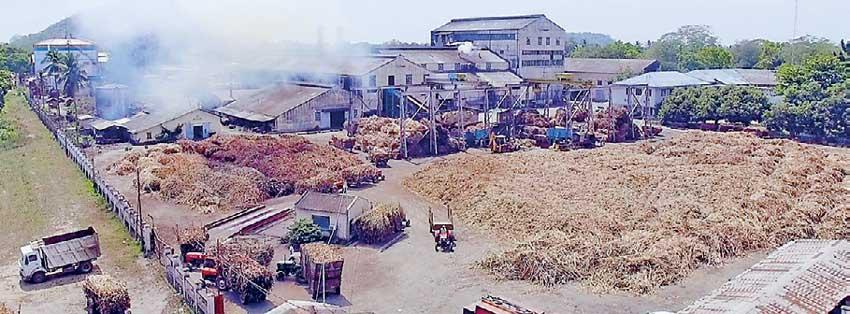29 Nov 2022 - {{hitsCtrl.values.hits}}

Gal Oya Plantation
At a time when enhancing profitability of public enterprises is an urgent need to boost the country’s economy, the revival and turnaround of Gal Oya Plantations (formerly known as Hingurana Sugar factory) by LOLC is an embodiment of how the nation’s assets can be enhanced through professionalism and expertise by the private sector.
Underperforming state enterprises are a drain on state coffers as has been seen only once too often. However, a profit-making state enterprise on the other hand can be a vibrant source of revenue, employment and a critical pillar of food security.
Public-private partnerships (PPPs) of this nature demonstrate how having professionals from the private sector turning state enterprises profitable, can generate valuable income for the government while allowing the government to retain its majority stake.
As Sri Lanka’s first PPP initiated to revive non-operational government entities in 2007, the revolution brought about by the Gal Oya Plantations today is empowering the local sugarcane farmers and bringing prosperity to their lives and leading to social upliftment, all the while generating massive profits for state coffers.
The Hingurana Sugar Factory, in 1994, was abandoned and the government closed down the factory in 1997. Even though the factory had been abandoned for over a decade, the Browns group evinced an interest in reviving the project. Thus, Gal Oya Plantations was formed 15 years ago in 2007 as a joint venture between the government and a consortium of private sector investors comprising Brown and Company PLC and LOLC Holdings PLC. Even today, 51 percent of the ownership is with the government and 49 percent of the shares are owned by the consortium that was formed to revive the sugar factory.
The company had to earn the trust of the local farmers who had been left high and dry the last time around when the government closed down the factory, forcing them to turn to paddy cultivation and odd jobs to make a living. Today, the thriving sugar plantation employs about 1,300 direct employees across 8,500 ha of agri lands.
About 8000 farmers are engaged in sugarcane cultivation and over 20,000 people gain indirect employment from this project. Gal Oya Plantations not only revived the plantation and generated employment for thousands but it also made it a profitable entity.
It was LOLC’s passion to revive a national asset that kept them committed to this mammoth task. Overcoming all the seemingly insurmountable obstacles, Gal Oya has gained the reputation of being a giant in sugar production in the country and a rolemodel of a successful PPP and professionally managed entity.
Sourcing the funding for the project itself was an epic undertaking, as the government did not channel any investment in the factory revival project, except for its equity asset of Rs.516 million, which could not be given as security. Hence, funds could not be borrowed against it. Notwithstanding this road block, LOLC invested private equity amounting to Rs.495 million into the project, along with taking commercial loans.
Productivity has skyrocketed as a result of improved machinery and agricultural practices. Some 374,000 metric tonnes of sugarcane was used for production last year and the quantity of sugar produced was 24,000 metric tonnes.
The target for 2022/23 was to produce 30,000 metric tonnes. Besides sugar, the Gal Oya factory also produces 6.7 million litres of ENA (Extra Neutral Alcohol) from molasses, a by-product of sugar production. This is the highest in the history of Hingurana since 1960. The distillery complex at Hingurana is designed to produce 21,500 litres of ENA/day.
It is pertinent to note that the economic benefits that emanate from the profit-making status of Gal Oya. Producing 75,000 MT of sugar results in import substitution of US$ 35 million per annum and contributes 12 percent to 15 percent of the country’s requirement only from Gal Oya. This foreign exchange saving in turn helps to enhance foreign exchange reserves in the country during the current economic crisis. In addition, production of 14 million litres of ENA results in import substitution of US$ 14 million per annum and further assists self-sufficiency in ENA.
The benefits flowing to the people in the community from Gal Oya are undeniable and it is imperative that the sugar factory continue smooth operations to enhance food security whilst also providing direct and indirect employment to keep home fires burning.
At a time when the government is being asked to reverse the years of losses made by state enterprises in order to meet the requirements to be eligible for global funding, a profitable project like Gal Oya should be a shining example for more such PPPs - bringing the best of Sri Lanka together to serve the nation.
06 Nov 2024 6 minute ago
06 Nov 2024 14 minute ago
06 Nov 2024 2 hours ago
06 Nov 2024 3 hours ago
05 Nov 2024 05 Nov 2024